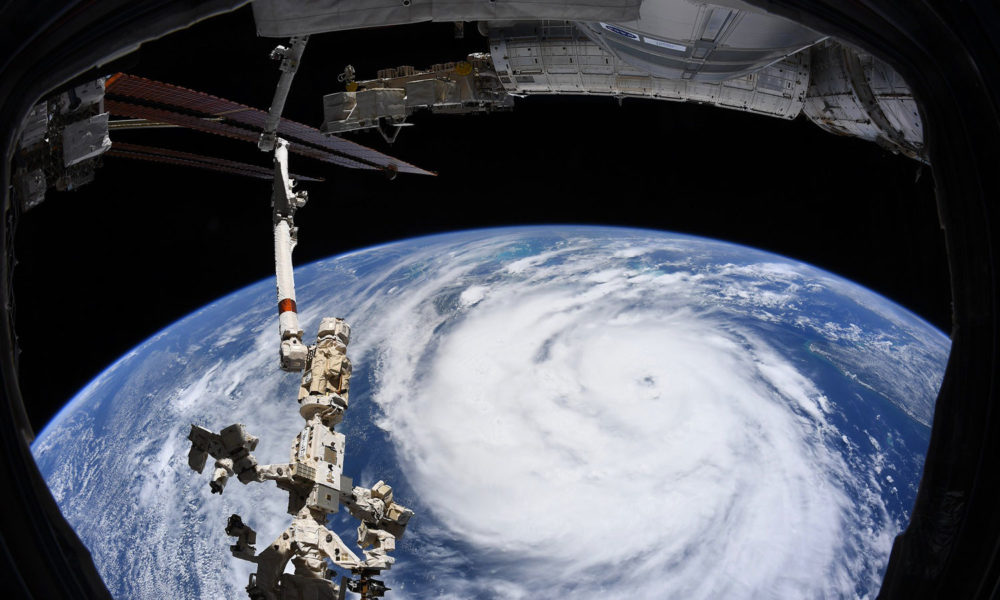Updated first paragraph to include Hurricane Agatha, the first named storm of the Pacific Hurricane season which made landfall Monday, after this post was originally published.
Here we are again, on the cusp of another Atlantic hurricane season. June 1 is the official start, but for the past 7 years the first named storm (and sometimes the second) formed before that date. This year broke the streak, and that is a good thing, although the first storm from the Pacific, Agatha, may bring the first Atlantic named storm very soon.
Still, both the National Oceanic and Atmospheric Administration (NOAA) forecast, released on May 24, and the Colorado State University (CSU) forecast, released on April 7, predict a season with above-normal activity— for the seventh consecutive year. The predictions this year have a confidence level of 70 percent: 14 to 21 named storms (winds of 39 mph or higher), of which 6 to 10 could become hurricanes (winds of 74 mph or higher), with 3 to 6 of those becoming major hurricanes (Category 3, 4 or 5; with winds of 111 mph or higher). The confidence level is based on several climate factors and the probability of climatic conditions conducive to the formation of tropical cyclones, the climate event category that encompasses tropical depressions, tropical storms, and hurricanes.

These forecasts are very similar to the 2021 ones from NOAA and CSU, which reflected well the observed activity that year (21 named storms). That was not the case in 2020, when the number of named storms (30) ended up being much higher than predictions.
Of course, we have questions!
Here are some in our minds right now:
- Will this season exhaust the list of 21 names from the World Meteorological Organization, like 2020 and 2021 did?
- How close will the forecasts be to reality?
- How significant will storm-related damage be?
All these questions boil down to pretty much the same answer: it depends on the conditions that will occur throughout hurricane season.
Conditions such as El Niño or La Niña, the temperature of surface (and sub-surface) waters of the Atlantic, the intensity of the West African monsoon, and several other factors determine the occurrence and intensity of tropical storms in a given year. Right now, a La Niña, paired with warm Atlantic waters and an enhanced west African monsoon, all point to the higher-than-average activity forecast.
However, these conditions may change throughout the season, and that is why updated forecasts are released by both NOAA and CSU later in the season, the last update usually being in August. So, while it is certainly a wait-and-see situation, time is of the essence to prepare for the worst while hoping for the best.
Will this season exhaust the list of 21 names?
I’ve written before about how storms are getting stronger, wetter, slower, and more destructive, and how many of the links between hurricanes and global warming are getting stronger. We know there has been an observed trend in frequency of stronger storms (category 3 and higher) in the last 40 years or so: a study found that the likelihood of a given tropical cyclone becoming a Category 3-5 hurricane increased by roughly 8 percent per decade in this period. However, whether hurricane frequency as a whole is increasing is still unknown. Can we expect more seasons like 2020 and 2021? Probably, but again, conditions will tell.
Notably, the rapid intensification of storms seems to be here to stay, and various news outlets are calling attention to it this season (see here and here). Hurricane Ida rapidly intensified in 2021, and at least ten storms in 2020 gained 35 mph or more in sustained wind speed within 24 hours or less. Hurricanes Eta and Iota had record-breaking 80 mph increases as they approached the coast of Nicaragua. Rapid intensification is a special concern for forecasters, governors and mayors because it makes it more difficult to plan evacuations and other preparations. The phenomenon has become more frequent in recent years, and data suggest that human-caused global warming might be a factor.
A number of studies suggest that human-caused global warming may be playing a role in the observed changes in hurricanes, and there is a lot of evidence pointing toward a climate-caused trend, but we’re not 100% certain. For example, a recent review blog from NOAA stated that, despite many study findings, one “cannot confidently detect a trend today in observed Atlantic hurricane activity due to man-made (greenhouse gas-driven) climate change.”
How close will the forecasts be to reality?
NOAA administrator Rick Spinrad, in his briefing, highlighted the fact that there has been a 57% improvement of average 72 hour storm tracking error since 2000, and that storm intensity forecast also improved, with the average error now 40% lower than it was in 2000. All these improvements would not be possible without proper funding, and that’s why it is important for Congress to continually support NOAA’s budget. Without these improvements, forecasts could not have the confidence level that they currently have.
In addition to the total number of storms, hurricanes and major hurricanes, the CSU forecast includes probabilities of them tracking within 50 miles of each county or parish along the Gulf and U.S. East Coast, and the following probabilities of major hurricanes making landfall:
• 71% for the entire U.S. coastline (average for the last century is 52%)
• 47% for the U.S. East Coast including the Florida peninsula (average for the last century is 31%)
• 46% for the Gulf Coast from the Florida panhandle westward to Brownsville (average for the last century is 30%)
• 60% for the Caribbean (average for the last century is 42%)
These probabilities go along with studies that have found that areas of the Gulf are more likely to see not only increased landfall frequency but also more sequences of storms with short recovery times in between. Meanwhile, the East Coast may be impacted by more slower-moving or stalling storms that can cause more damage.
How significant will storm-related damage be?
Will 2022 surpass 2020 and 2021 in number of billion-dollar extreme weather events or hurricane-associated costs? Of course, that depends on both where storms hit and their strength. However, a large piece of future damage lies in how people build or rebuild after a disaster —and while planning ahead for projected increases in extreme weather events.
The improvement in storm tracking is also essential to this question—damage is likely to occur when a storm or hurricane tracks near land or makes landfall. So, while accurate tracking may not prevent a storm from causing damage, it can certainly reduce its impact on both property and life because of better early warnings. Better alert systems are also an essential part of preparedness.
We always say “it only takes one storm” to cause damage. Here’s to hoping it will be none.

